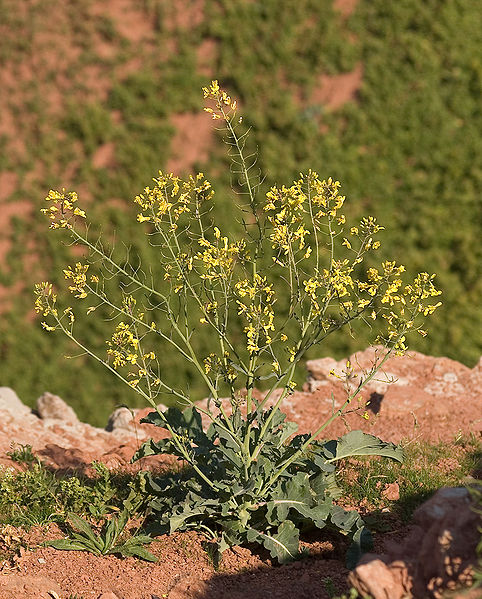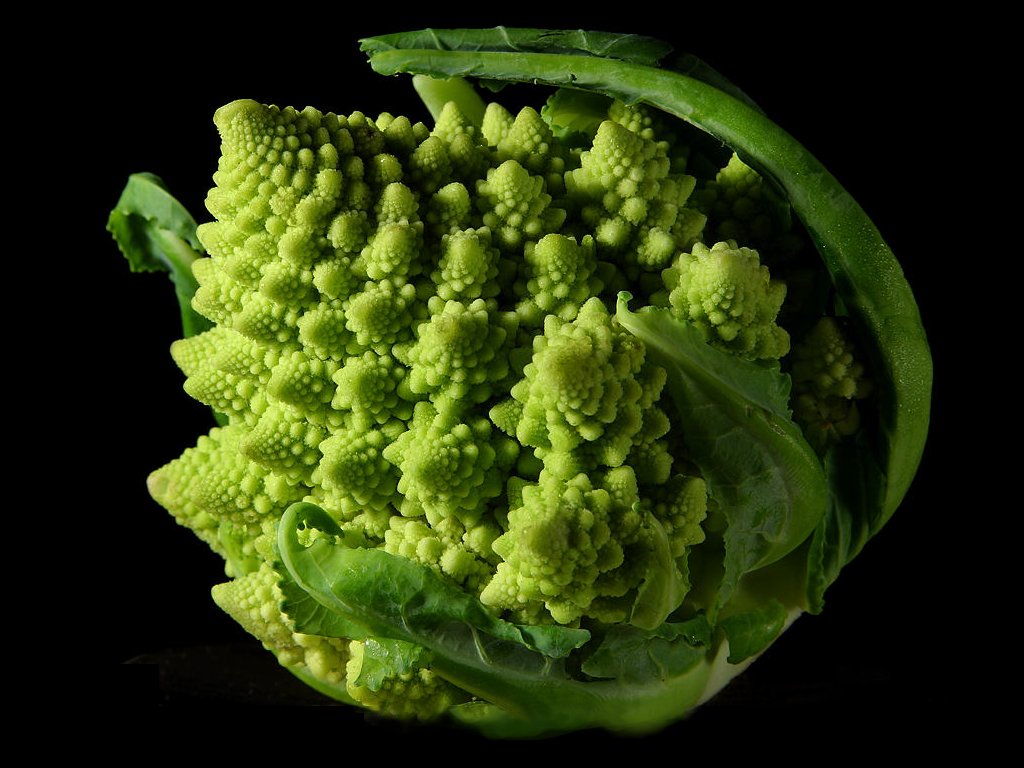So let’s say you’re a wild leafy vegetable, innocently minding your own business on limestone seacliffs on the coasts of southern and western Europe. Suddenly, some prehistoric human takes it into their head that you are worth installing in their newfangled “garden”. Fast forward several thousand years, and the results of that domestication almost put Westminster to shame.
That plant was Brassica olearaca — wild cabbage — and it has become the stuff of vegetable legend. For the progeny of that ancestral plant, when subjected to many thousands of years of natural mutations and careful selection of the result by humans, has evolved into a cohort of vegetables that either strike fear or delight in the hearts of man. They are (drumroll please):
- Broccoli
- Cauliflower
- Kale
- Collard Greens
- Chinese Broccoli
- Cabbage
- Kohlrabi
- Brussels Sprouts
- and last post’s mystery vegetable, Romanesco.
In all of these plants, gardeners noticed interesting traits that emerged over the generations in their garden, and began to selectively breed for ones that were desirable. In broccoli and cauliflower they selected for genes that put flower development on overdrive (the tumorous mass at the top). In cabbage, they selected for genes that caused the apical (apex) bud to stop growing vertically and swell with leaves. In Brussels sprouts, they selected for the same process, but instead of the apical bud, to the lateral buds that develop from each leaf axil (junction) with the stem. In kohlrabi, they selected for a big fat swollen stem itself. And in kale and collard greens, they selectively bred plants with the biggest, fluffiest green leaves. This is artificial selection, and it is evolution every bit as much as natural selection is. Darwin noticed the same process had taken place when humans turned wolves into dogs, and pigeons (Columbia livia) into the explosion of bizarre and sometimes disturbing forms favored by pigeon fanciers. And we all know how the dog thing turned out.
As Amy correctly intuited in the comments to the last post, romanesco is most closely related to the cauliflower branch of the family tree. For those who care, according to the wikigooglepediatron, romanesco was first documented in the 16th century in Italy, but was probably around for quite a while before that. Obviously, in Romanesco some gene (or genes) for floral development got turned on and stuck in Sorcerer’s Apprentice (or Funhouse Mirror) mode, splitting and dividing and spiraling seemingly ad infinitum. And, being human, we couldn’t help promoting(bio-pun!) this. Could we be satisfied with the lumpy and grotesque flower-buds-on-steroids approach of broccoli and cauliflower? No! We must have flowers to feed our soul. We must have . . . romanesco.




{ 1 trackback }
{ 4 comments… read them below or add one }
so interesting! i never knew!
AHA! These are cruciferous vegetables. You know, when the health website says, “Eat more cruciferous vegetables – they are good for you!” I vaguely knew they were all related, but didn’t quite understand how… or the human hand in it. Cool!
Interesting, thank you. I never know whether or not to cook a Romanesco or ask it me to take me to its mother ship.
Ha! Brilliant. : )